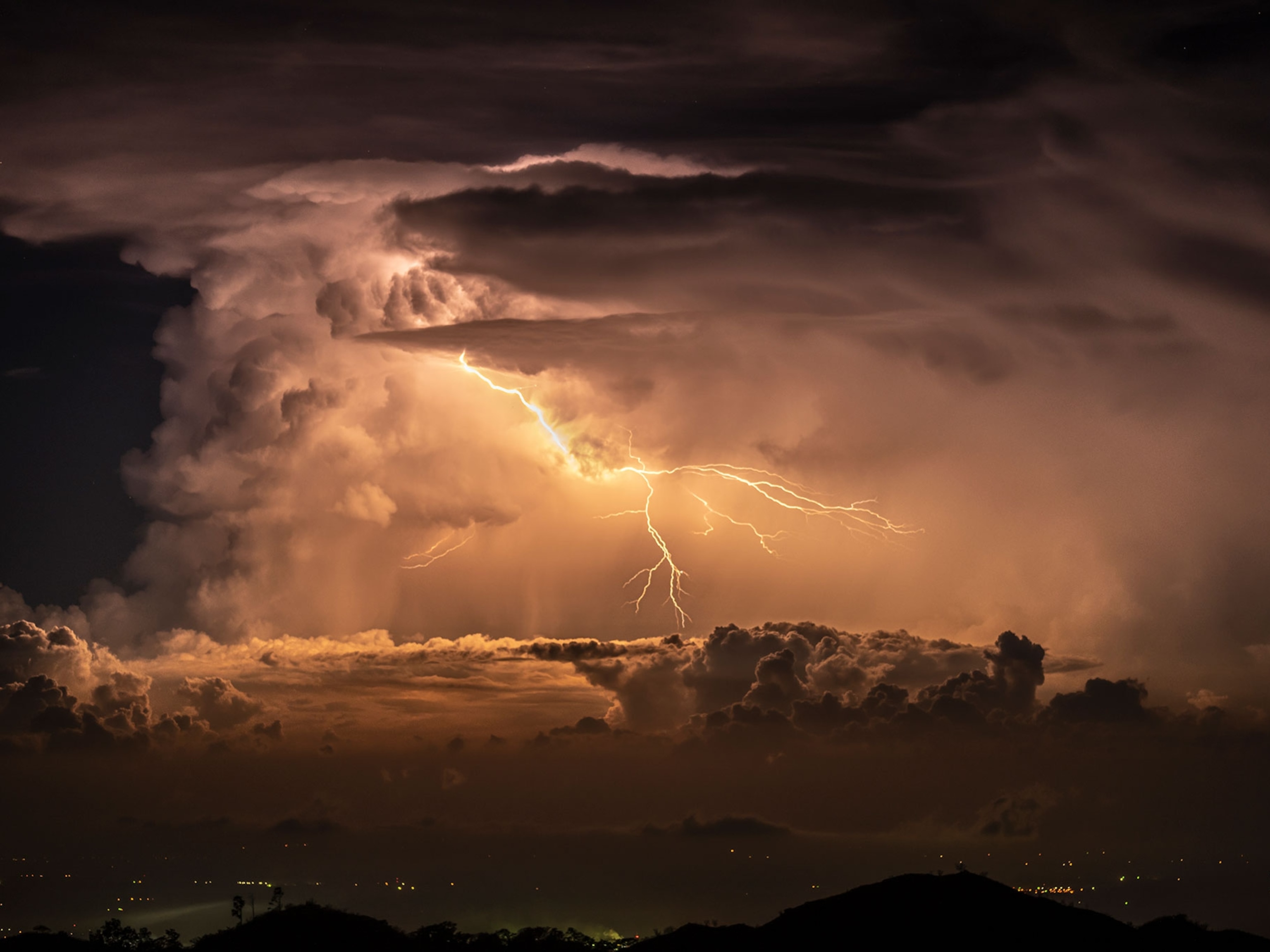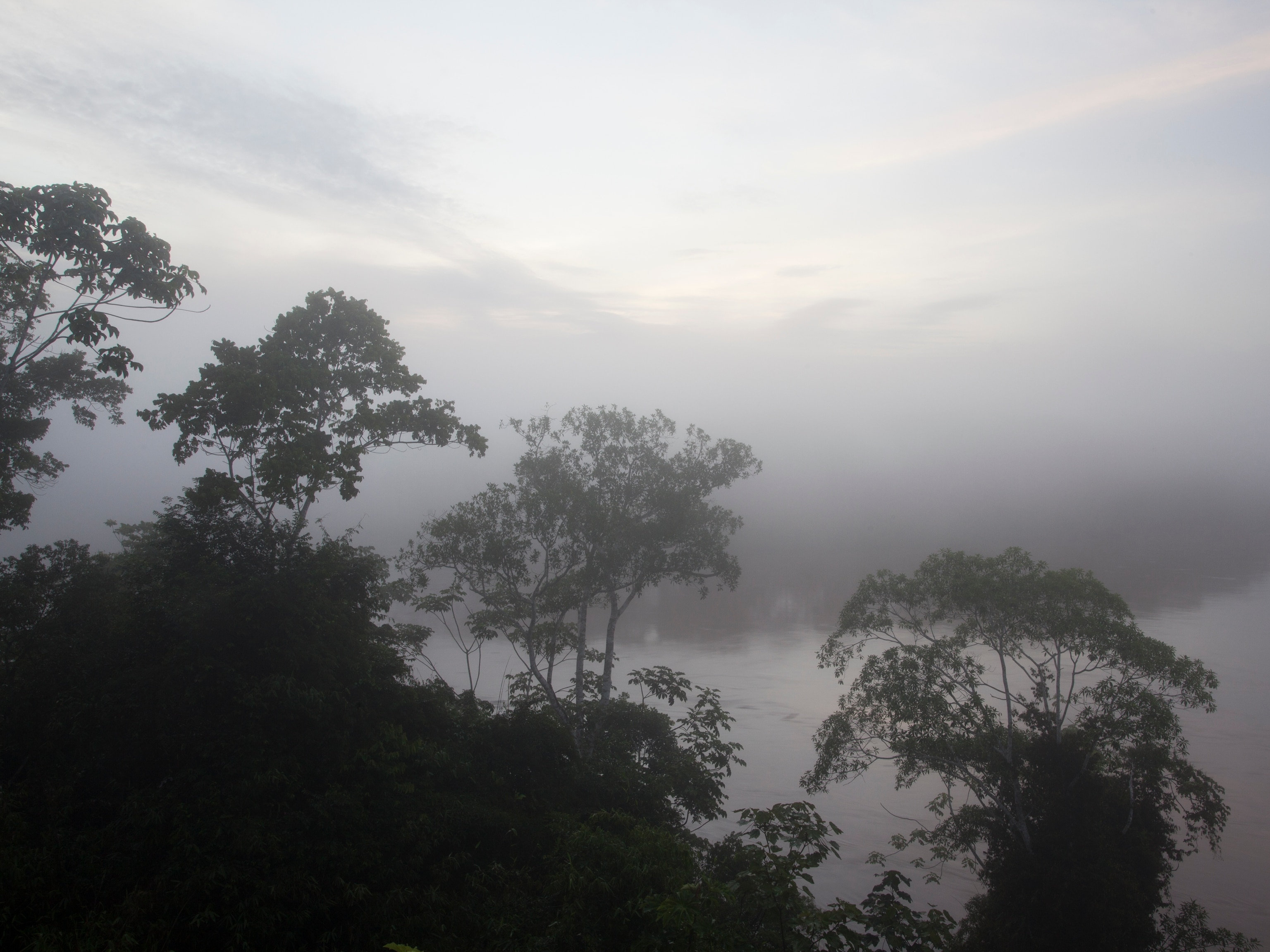
Lightning-Caused Fires on the Rise in the World’s Largest Forest
New NASA study shows how lightning is driving fire and pushing it north, with a likely link to climate change.
As fire season reaches for its annual summer turning point, the role lightning plays as the culprit in setting fires shows a worrisome trend. That’s not good news for the boreal forest, the world’s largest forest habitat, where virtually all wildfires are ignited by lightning.
Since 1975, the number of fires ignited by lightning has increased between two and five percent, driven by an increase in volatile thunderstorm weather, according to a new NASA study published Monday in Nature Climate Change. In two of the last three years, immense fires in Alaska and Canada’s Northwest Territories provided a good case study, says Sander Veraverbeke, the study’s lead author and an Earth scientist at Vrije Universiteit Amsterdam.
Between 1975 and 2015, 82 percent of area that burned in the Northwest Territories originated from lightning. The figure is even higher—95 percent—for the burned area in Alaska. The four years with the largest fires, and the larged burned areas, have all occurred since 2003. The colossal fires in 2014 and 2015 involved a record number of lightning ignitions, with what scientists called “exceptionally high levels of burning near the northern treeline.” In the 2014 Northwest Territories fires, 98 percent of the area burned was ignited by lightning, and in the 2015 Alaska fires, 99 percent of the burned area was caused by lightning.
“I was mesmerized by the enormous firestorm that was happening,” Veraverbeke says, explaining what prompted the study. “You see these big events happen quite frequently now in the high latitudes, when normally, they could occur once every 80 years.”
The boreal forest wraps around the top of the globe in North America and Eurasia. It is home to 30 percent of the Earth’s forest cover and stores about 30 percent of the carbon found on the Earth’s surface. Changes in climate and fire are transforming the boreal at a faster rate than changes are occurring elsewhere. Large fires are creeping north and burning Arctic tundra. As peat is burned, carbon is released.
“These fires are claiming an area that they haven’t burned historically, which also means they can change the carbon balance and shift an ecosystem into a different state,” Veraverbeke says.
Veraverbeke and his team analyzed satellite images and data from ground-based lightning networks to examine how fires are caused.
Mike Flannigan, director of the Western Partnership for Wildland Fire Science at the University of Alberta in Edmonton, says the analysis adds to the picture already taking shape about fire in the boreal.
“The work done by these authors suggests there will be more lighting fires, so there will be more fire,” he says. “This has implications on many fronts. There will be more smoke. It’s transported around the globe. It can go down to the Lower 48 and to Europe, all the way around to Asia and back again. These fires generate a significant amount of greenhouse gas emissions, especially as they burn peat. That may speed up the warming. The more fire you have, the more emissions you have and the warmer it gets. The warmer it gets, the more fire you have, and so on.”
It is not all bad news. As fires burn into the tundra, they remove the thick layer of organic soil and expose mineral-rich soil that creates a good seedbed for southern forests migrating north to escape warming temperatures.
“With the fast rate of warming in the past three or four decades, many tree species are lagging in what climatically is their niche,” Veraverbeke says. “They cannot move north that quickly, because climate warming is going too fast. So they are far behind in their niche. Fire could be a driver to help them find their niche again.”





